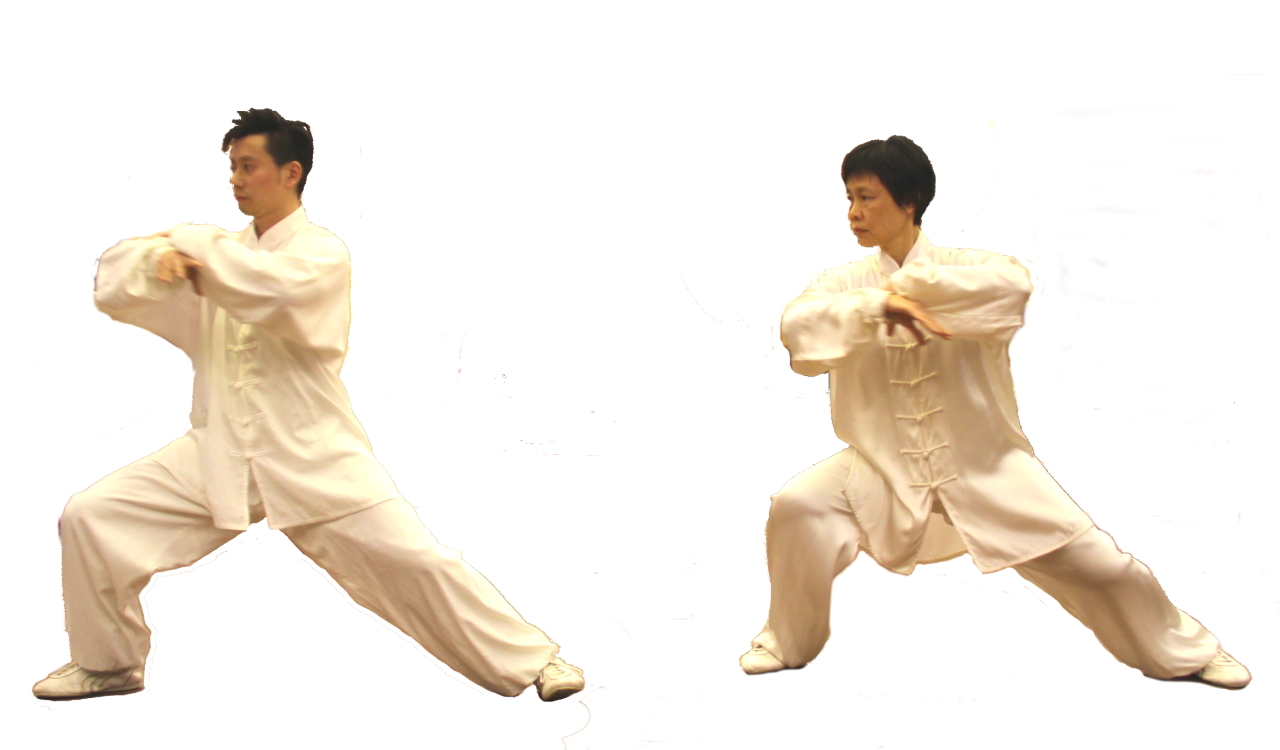If you have been practicing tai chi for a few years, you may have already been starting to practice some of the advanced skills. Often, once we finish the series of courses to learn all the movements, we offer an advanced class. For instance, after the Basics course which every new student takes to gain some basic movement skills, people will typically choose to attend a Yang Style course series of 2 parts plus the advanced course which imparts a deeper understanding as well as increased details about the nuances of each movement.
In addition to gaining all these details about how a tai chi form is truly practiced, there are also other concepts or additional layers of understanding which face students as they advance their skill level. In this blog, we will discuss the last of the 3 main challenges of advancing tai chi skills.
Don’t stop (Soft 柔軟 róuruǎn)
When learning the sequence of movements in a tai chi form, we typically have to break down movements into small manageable chunks. This makes it easier to learn and remember moves. After we learn the moves and the sequence of a form, we learn to execute the entire form with one move flowing into the next move without stopping until the form closes.
During the basic warm up exercises performed at the beginning of each class, there is no stopping then either. Even when a single move is repeated many times or when we are flowing into the next exercise movement from the first there is no stopping until the entire exercise set comes to a close.
Besides being an internal martial art, tai chi is different compared to many other martial art forms. For many other martial arts forms, there would be a pause at the end of executing a move before executing the next move. Even when the other martial arts forms are executed at high speed, we clearly see the demarcation points of each movement.
In comparison, tai chi moves are soft and flowing. The mark of a quality performance of a tai chi form is when the movements are soft enough to flow like water without any stiff points or stops. From the start of the form to the end of the form, the “dantian” continuously leads the whole body and the limbs through the sequence of moves.
Have you ever witnessed rhythmic gymnasts perform with a spiraling ribbon which keeps moving throughout the entire routine? They do this by wielding a stick with a ribbon attached. When the gymnast stops moving the stick, the ribbon becomes motionless and drops to the floor. Of course, the point is that the ribbon must never stop moving until the end of the routine.
Now, imagine that your “dantian” is like the stick handle leading the ribbon through flowing movements. And imagine your limbs and body to be the soft ribbon led by the stick in a rhythmic gymnastics routine. To remain in motion, the dantian must constantly lead the body and limbs until the close of the form.
If our “dantian” stops, our limbs will become motionless and drop. If our limbs do not drop, then our limbs are too stiff. Imagine a ribbon still hanging in the air when the stick has stopped moving. The ribbon definitely would need to be stiff to do so. The same applies to our limbs when they remain in the air when our dantian has stopped moving. When this happens, go back to starting with a relaxed body and limbs.
Once the tai chi form starts, your “dantian” needs to keep moving until the completion of the form to keep the body and limbs in motion. While performing a form, your mind constantly stays one step ahead of your body movements. Before the current move finishes, your mind is already thinking of initiating the “dantian” for the next move.
Just like the rhythmic gymnasts who only ever have to focus on moving the stick without ever having to think about the ribbon, the tai chi practitioner only ever needs to focus on the next movement of the dantian. We intuitively know that because the ribbon is soft and supple, it will follow the direction of the stick. In the same way, a tai chi practitioner trusts that when they relax the limbs and body, the external will follow the direction of the internal or dantian.
Advanced Tai Chi Skills Fundamentals


Relax (鬆 song), slow (緩 huǎn) and soft (柔 róu) are three very important fundamental requirements of tai chi. If any one of the three components are lacking, your tai chi skill level will not advance. You may not achieve all 3 at once, but you have to constantly strive to improve these 3 components. Only then can you progress from learning the art (招熟 zhāo shú) to knowing the energy (懂勁 dǒng jìn).
From the Taiji Quan Treatise:
To practice Taiji Quan, one must learn to first manage the form in order to understand the principle and meanings of the art (招熟 zhāo shú). Next, learn to know the energy and development of one’s capabilities (懂勁 dǒng jìn). Finally, elevate your practice to the highest levels of spiritual illumination, after which the free use of Taiji Quan will have been achieved (神明 shénmíng).
Be patient with yourself. It takes many years to become an accomplished tai chi practitioner. In the meantime, enjoy the journey with a community of friendly and enthusiastic tai chi students here at Ji Hong Tai Chi Mississauga.

